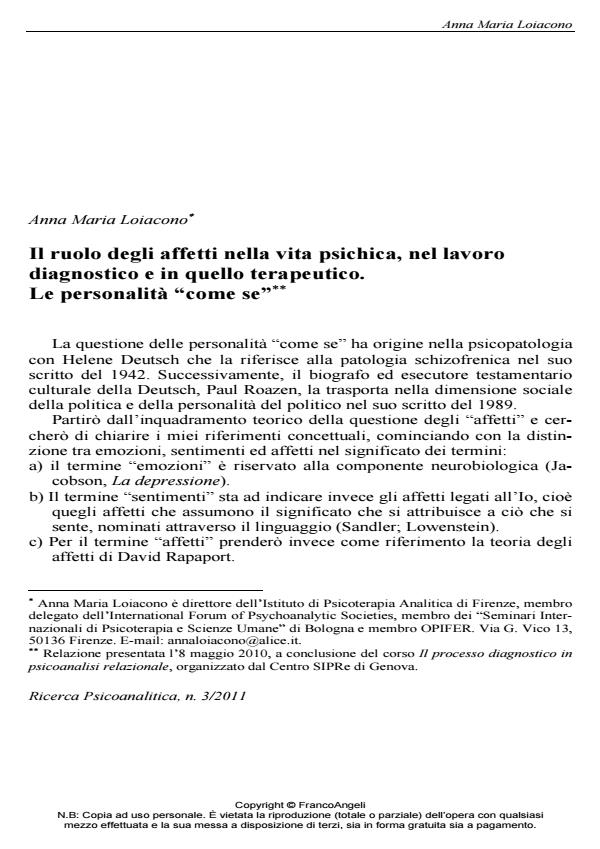The role of affects in psychic life, diagnosis and therapeutic work. the "as if" personalities
Journal title RICERCA PSICOANALITICA
Author/s Anna Maria Loiacono
Publishing Year 2011 Issue 2011/3
Language Italian Pages 11 P. 57-67 File size 625 KB
DOI 10.3280/RPR2011-003005
DOI is like a bar code for intellectual property: to have more infomation
click here
Below, you can see the article first page
If you want to buy this article in PDF format, you can do it, following the instructions to buy download credits

FrancoAngeli is member of Publishers International Linking Association, Inc (PILA), a not-for-profit association which run the CrossRef service enabling links to and from online scholarly content.
The concept of an "as if" personality is proving to be of particular relevance today. Removed from the context of psychopathology where it was first developed by Helene Deutsch, it has been transported to the sphere of social "normality" by Paul Roazen, who characterizes the process of bonding with the leader as not one of identification but of imitation. What emerges from this standpoint is the vision of a general conformism which is present even among the ranks of our own profession. The author tries to demonstrate how in therapeutic practice, the social phenomenon of "as if" personalities becomes obvious through the "therapeuticism" which practitioners are encouraged to exercise from the very beginning of their training. This results in focusing one’s attention mainly on classifications and on therapeutic results. In substance, such psychoanalytic conformism can be seen as the collective "as if" of our profession, where, despite a constant call for authenticity, there continues to be a great display of prescriptions for what "should" be done. A clinical case shows the peculiarity of the "as if" personality concept and the possible difficulties in diagnosing it.
Keywords: Affects; "as if" personality; narcissism; countertransference; therapeuticism; alienation
Anna Maria Loiacono, Il ruolo degli affetti nella vita psichica, nel lavoro diagnostico e in quello terapeutico. Le personalità "come se" in "RICERCA PSICOANALITICA" 3/2011, pp 57-67, DOI: 10.3280/RPR2011-003005